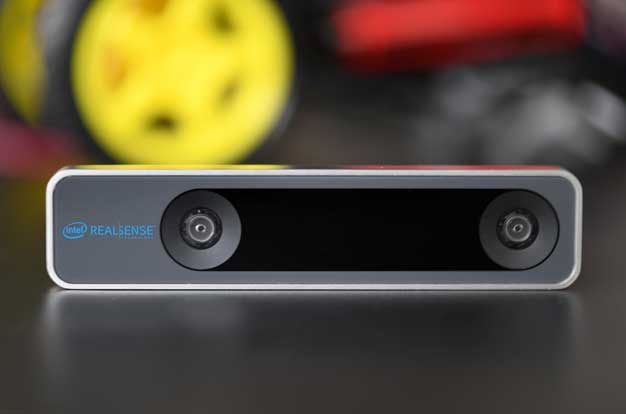Intel RealSense T265 V-SLAM Tracking Camera To Empower Next-Gen AR, VR, Robotics, And Drones
Intel has announced the latest its long line of RealSense Tracking Cameras, the T265. The chipmaker is touting the T265 as a new class of standalone inside-out tracking devices that can give developers the tools they need to build autonomous devices with high-performance guidance and navigation. Intel's T265 tracking camera uses proprietary visual simultaneous localization, and mapping (V-SLAM) tech that Intel says is key for applications that need a "highly accurate and low-latency tracking solution," and it notes its tech is ideal for robotics, drones, augmented reality, and virtual reality.
The T265 is powered by an Intel Movidius Myriad 2 vision processing unit (VPU) that handles all the data processing needed for tracking on the machine. Intel purchased Movidius back in 2016 in order to beef up its AI portfolio. That VPU allows the device to have a small footprint and low power consumption making it easy to use by developers who are implementing the T265 into existing designs or building new IP.
The T265 allows devices to operate in those conditions using a combination of known and unknown data to navigate to its destination accurately -- such as in a warehouse where obtaining a GPS lock may be difficult. In addition, the camera is can be integrated into small form factor devices, making it well-suited to use in drone or robotic delivery scenarios among other uses.
Intel's tracking camera can deliver 6-degrees-of-freedom inside-out tracking by gathering data from a pair of onboard fish-eye cameras that each have an approximately 170-degree field of view. Intel's V-SLAM system constructs and continually updates maps of unknown environments and the location of the device inside the environment; all of this is done without the need for external sensors.
The T265 is meant to complement Intel's RealSense D400 camera, and the data from both can be combined for advanced applications. Hardware requirements in that scenario include sufficient non-volatile memory to boot the device, and a USB 2.0 or 3.0 connection with 1.5W of power. Intel is taking pre-orders for the RealSense Tracking Camera T265 now for $199 with shipping slated for February 28.




